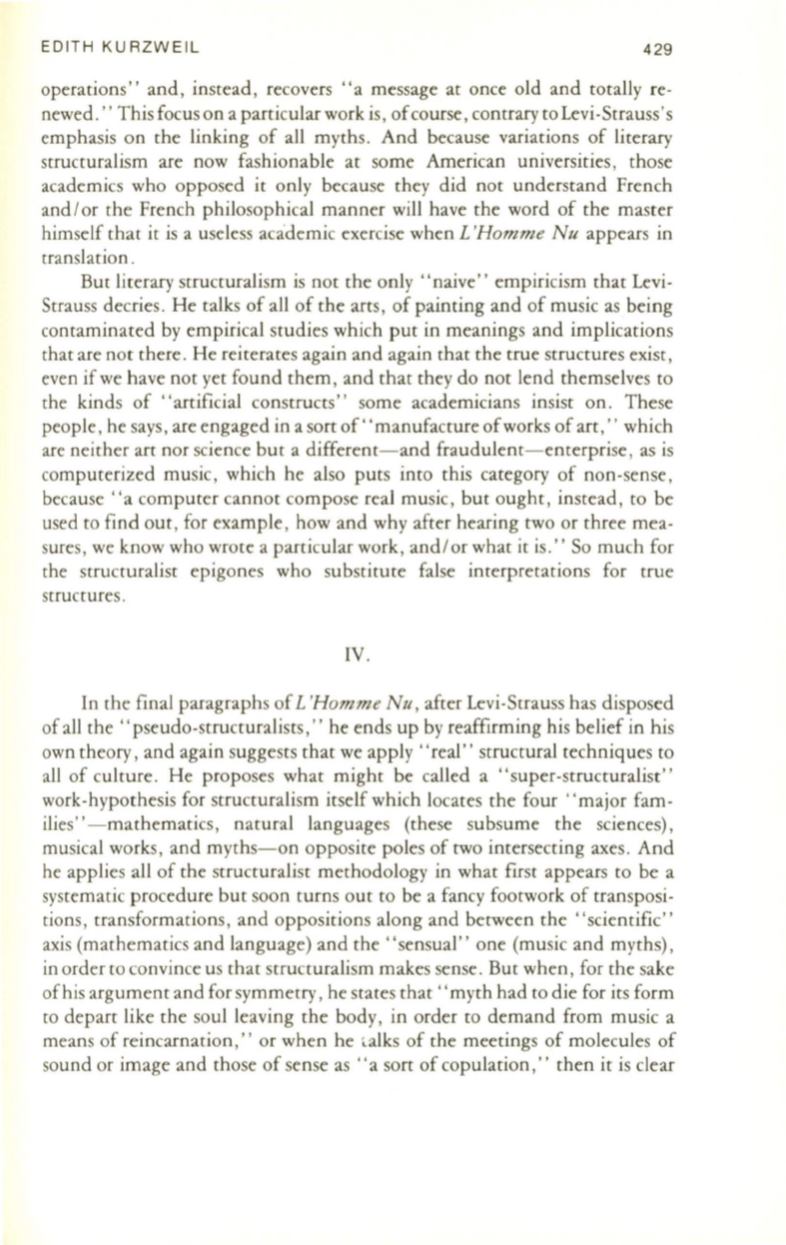
EDITH KU RZWEIL
429
operations " and , instead , recovers "a message at once old and totally re–
newed ." This focus on a particular work is, ofcourse , contrary to Levi-Strauss's
emphasis on the linking of all myths . And because variations of literary
structuralism are now fashionable at some American universities , those
academics who opposed it only because they did not understand French
and / or the French philosophical manner will have the word of the master
himself that it is a useless academic exercise when
L 'Homme Nu
appears in
translation .
But literary structuralism is not the only "naive" empiricism that Levi–
Strauss decries . He talks of all of the arts, of painting and of music as being
contaminated by empirical studies which put in meanings and implications
that are not there . He reiterates again and again that the true structures exist ,
even if we have not yet found them , and that they do not lend themselves to
the kinds of "artificial constructs " some academicians insist on . These
people, he says , are engaged in a sort of " manufacture ofworks of art," which
are neither art nor science but a different- and fraudulent-enterprise , as is
computerized music , which he also puts into this category of non-sense,
because " a computer cannot compose real music, but ought, instead, to be
used to find out, for example, how and why after hearing two or three mea–
sures , we know who wrote a particular work, and/ or what it is ." So much for
the structuralist epigones who substitute false interpretations for true
structures .
IV.
In the final paragraphs of
L 'Homme Nu ,
after Levi-Strauss has disposed
of all the" pseudo-structuralists," he ends up by reaffirming his belief in his
own theory, and again suggests that we apply" real" structural techniques to
all of culture. He proposes what might be called a "super-structuralist"
work-hypothesis for structuralism itself which locates the four " major fam–
ilies" - mathematics, natural languages (these subsume the sciences),
musical works, and myths- on opposite poles of two intersecting axes . And
he applies all of the structuralist methodology in what fust appears to be a
systematic procedure but soon turns out to be a fancy footwork of transposi–
tions , transformations, and oppositions along and between the' 'scientific"
axis (mathematics and language) and the " sensual " one (music and myths) ,
in order to convince us that structuralism makes sense. But when , for the sake
of his argument and for symmetry, he states that" myth had to die for its form
to depart like the soul leaving the body , in order to demand from music a
means of reincarnation," or when he talks of the meetings of molecules of
sound or image and those of sense as "a sort of copulation, " then it is clear


